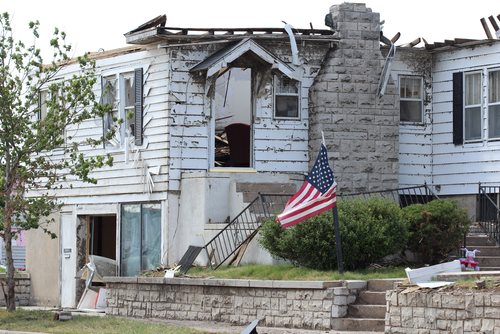
The aftermath of natural disasters can be devastating for communities, leaving them struggling to rebuild and recover.
In the wake of Hurricane Sandy, the U.S. Department of Housing and Urban Development (HUD) has been working with New York State to develop plans for disaster recovery.
Recently, HUD issued three disaster recovery plans for New York, intended to provide funding and guidance for the state’s recovery efforts. In this article, we will explore the details of these plans and their potential impact on the affected communities.
Background on Hurricane Sandy
Hurricane Sandy made landfall in the northeastern United States on October 29, 2012. The storm caused widespread flooding and destruction, particularly in New York and New Jersey. Many areas were without power for days, and thousands of homes and businesses were damaged or destroyed. The storm caused more than $70 billion in damage and resulted in the deaths of over 200 people.
In the immediate aftermath of the storm, emergency response and relief efforts focused on providing immediate assistance and aid. However, the long-term recovery process has been much slower and more challenging. The effects of the storm are still being felt in many communities, and the rebuilding process has been complicated by factors such as bureaucracy, funding limitations, and ongoing environmental concerns.
HUD’s Disaster Recovery Plans
To help facilitate the recovery process, HUD has been working with New York State to develop disaster recovery plans. These plans are intended to provide guidance and funding to communities affected by Hurricane Sandy, as well as other natural disasters that may occur in the future. The plans are also designed to address some of the challenges faced by the state during the recovery process, such as streamlining bureaucracy and ensuring transparency in the allocation of funds.
HUD has issued three plans for New York State: the Community Development Block Grant-Disaster Recovery (CDBG-DR) Action Plan, the Statewide Housing Recovery Program, and the Flood Risk Reduction and Resiliency Program. Let’s take a closer look at each of these plans and what they entail.
Community Development Block Grant-Disaster Recovery (CDBG-DR) Action Plan
The CDBG-DR Action Plan outlines how the state will allocate $4.2 billion in federal funding to support disaster recovery efforts. The plan addresses a range of issues, from housing and infrastructure to economic development and social services.
Housing: One of the biggest challenges facing communities affected by Hurricane Sandy has been the shortage of affordable housing. The CDBG-DR Action Plan includes provisions for the construction of new affordable housing units, as well as the repair and renovation of existing housing stock. The plan also provides funding for rental assistance and other housing-related services.
Infrastructure: The plan addresses infrastructure needs such as the repair and replacement of public facilities, including hospitals, schools, and public housing. It also provides funds for the restoration of transportation infrastructure, such as bridges and roads, as well as the development of new infrastructure projects to improve resiliency and reduce the risk of future disasters.
Economic Development: Recognizing the economic impact of Hurricane Sandy, the plan includes measures to support businesses and create jobs. This includes funding for small-business loans, workforce training programs, and other initiatives aimed at promoting economic growth.
Social Services: The plan also addresses social services needs, such as funding for mental health services, support for vulnerable populations such as the homeless and elderly, and support for community organizations and nonprofits.
Statewide Housing Recovery Program
The Statewide Housing Recovery Program is a component of the CDBG-DR Action Plan and is focused specifically on housing-related initiatives. The program provides funding for the repair and renovation of damaged homes, as well as the construction of new affordable housing units. The program is targeted at low- and moderate-income households, particularly those who are uninsured, underinsured, or displaced by Hurricane Sandy.
The program includes several different initiatives designed to address the different needs of affected communities. For example, the Build it Back program provides financial assistance to homeowners who need to repair or rebuild their homes. The program offers assistance with design, engineering, and construction costs, as well as support for navigating the complex permitting, zoning, and environmental regulations that can slow down the rebuilding process.
Other initiatives under the Statewide Housing Recovery Program include the Housing Trust Fund, which provides funding for the development of new affordable housing units, and the Housing Counseling and Support Services program, which offers assistance to homeowners and renters dealing with issues such as foreclosure and debt management.
Flood Risk Reduction and Resiliency Program
The Flood Risk Reduction and Resiliency Program is focused on reducing the risk of future disasters and increasing resiliency in communities affected by Hurricane Sandy. The program includes funding for a range of initiatives, from shoreline restoration to infrastructure improvements.
The program is focused on areas that are particularly vulnerable to flooding, such as coastal communities and low-lying areas. It includes measures such as the construction of seawalls and flood barriers, the restoration of wetlands and other natural features that can help absorb water, and the development of new flood forecasting and warning systems.
The program also includes funding for community engagement initiatives that aim to increase public awareness and support for resiliency efforts. These initiatives are designed to help build a culture of resiliency in affected communities, encouraging residents to take an active role in reducing their risk of future disasters.
Impact of the Plans
HUD’s disaster recovery plans have already had a significant impact on New York State. Since the plans were first issued, the state has received billions of dollars in federal funding to support recovery efforts. This funding has helped to address a range of issues, from housing and infrastructure to economic development and social services.
In terms of housing, the Statewide Housing Recovery Program has helped to repair or rebuild thousands of damaged homes, providing much-needed relief to homeowners and renters who were affected by Hurricane Sandy. The program has also helped to create new affordable housing units, providing a critical resource for low- and moderate-income families.
The Flood Risk Reduction and Resiliency Program has also had an impact, helping to reduce the risk of future disasters in vulnerable communities. Through initiatives such as shoreline restoration and infrastructure improvements, the program has helped to build a more resilient New York, better equipped to handle the challenges of natural disasters.
Though there has been some criticism of the plans, particularly in terms of their bureaucratic complexity and slow implementation, overall they have been praised for their comprehensive approach to disaster recovery. By addressing a range of issues, from housing and infrastructure to economic development and social services, the plans are helping to rebuild affected communities and promote long-term resiliency.
Looking Ahead
As New York moves forward with its disaster recovery efforts, there are still challenges to be faced. Ongoing bureaucratic delays, funding constraints, and environmental concerns all continue to complicate the recovery process. However, with the support of HUD and other federal agencies, New York is making progress in rebuilding and recovering from Hurricane Sandy.
Moving forward, it will be important to continue to prioritize resiliency and disaster preparedness. Natural disasters such as Hurricane Sandy are becoming increasingly common and severe, highlighting the need for communities to take proactive measures to reduce their risk of future disasters. The plans developed by HUD and New York State provide a framework for building that resiliency, but it will be up to communities and policymakers to make it a reality.
Conclusion
Natural disasters are incredibly challenging, leaving communities struggling to recover and rebuild. In the aftermath of Hurricane Sandy, New York State has faced a range of challenges, from housing shortages to infrastructure damage. However, with the support of HUD and other federal agencies, New York is making progress in its disaster recovery efforts.
The disaster recovery plans developed by HUD provide a comprehensive framework for addressing the complex issues involved in the recovery process. From housing and infrastructure to economic development and social services, the plans offer a range of initiatives aimed at promoting long-term recovery and resiliency.
Looking ahead, it will be important for New York and other communities affected by natural disasters to continue prioritizing resiliency and preparedness. By taking proactive measures to reduce their risk of future disasters, communities can help ensure a more sustainable and secure future for all.
On October 1, 2012, the Department of Housing and Urban Development announced that several communities in New York are receiving over $93 million of emergency aid for recovery efforts from Hurricane Irene and Tropical Storm Lee.
Now that specific areas like Orange County and the Town of Union have been approved for funding, the long-term recovery efforts can begin.
Mirza Orriols, HUD’s Acting Regional Administrator, stated: “Now that these plans are in place, it’s time to get down to the real business or rebuilding the housing and infrastructure damaged by last year’s terrible storms. New York, and most especially Orange County and the Town of Union can now begin to make their neighborhoods whole again.”
The funds for the long-term recovery efforts will address housing needs, as well as improvements to businesses and infrastructure that were not repaired by initial public and private funds. Data from the Federal Emergency Management Agency (FEMA) and the Small Business Administration (SBA) revealed these areas of New York were in most need of recovery efforts after Hurricane Irene and Tropical Storm Lee.
The funds for New York are part of the Community Development Block Grant funds approved by Congress on November 18, 2011. The appropriated funds addressed the most impacted areas of the nation like the severe tornados in Missouri and the Southeast U.S., the floods in North Dakota, the wildfires in Texas, and the hurricanes. Congress also gave HUD permission to distribute an additional $100 million for “the most impacted and distressed area.” The increase in recovery funds is a result of the additional funds.
HUD distributed a total of $71,654,116 earlier this year in the State of New York. About 80 percent of the funds assisted Schoharie, Tioga, Broome, Greene, and Orange County with damage repairs from Hurricane Irene and Tropical Storm Lee.
Source: U.S. Department of Housing and Urban Development




























